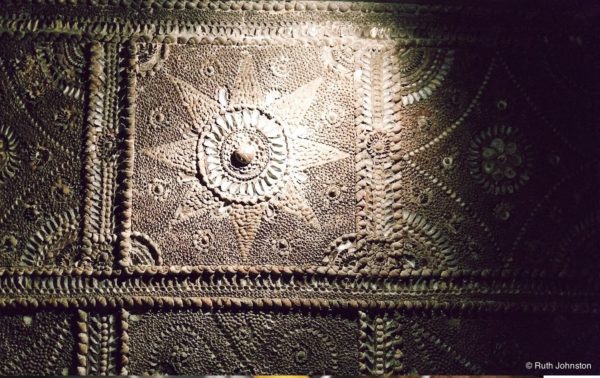
There exist many ancient man-made monuments and landmarks around the world that modern historians simply cannot deduce the exact purpose of: the Nazca Lines in Peru, the ruined city of Teotihuacan, and of course Stonehenge. The debates have been ongoing for centuries, but we are still no closer to a comprehensive understanding of them or even the cultures that created them. However, it cannot be denied that it is exactly because of the mystery these obscure remnants of human history hold that we are continually drawn back to them.
Perhaps not the most likely place for one such historical riddle is the English seaside town of Margate, Kent. Generally held in the national consciousness as the perfect place for a bank-holiday escape or “jolly boys’ outing”, Margate also contains one of the most fascinating and baffling pieces of subterranean architecture in the country: the Shell Grotto.
Although accounts of the Grotto’s original re-discovery are varied, most generally conclude that it was in the early 19th century, between 1835 and 1838. Whenever the exact date of the discovery might have been, in 1838 an article printed in the Kentish Gazette announced the Grotto’s presence to the general public and declared it open to visitation. Featuring a 70ft long passageway of hewn chalk that concludes in a 15x20ft chamber known as ‘the Altar’, the Grotto is renowned for featuring intensely intricate geometric mosaics on all its walls, all crafted from 4.6 million seashells adhered with a primitive cement (covering a total surface area of 190 square meters). The patterns of the Grotto make spectacular displays at any point, but they reach their zenith of complexity within ‘the Altar’, which features renditions of suns, stars, and other astronomical bodies. There is also an area called the Dome: a shaft that rises to the surface, featuring more complex cascades of arranged shells and allows a glimpse of celestial daylight to illuminate the area.
As wonderful as the Shell Grotto might be, most people, after first seeing it, would probably have many questions on the tip of their tongues: who, what, when ,where, why and how are all starting points, but, as of yet, we have no answers whatsoever. The purpose of the structure is totally unknown to us, as are the identities of the people who made it and the historical era it was constructed in. The owner of the Grotto will not (at present) permit the shells to be carbon dated, as such a large sample would need to be taken – in order to rule out previous repairs – that it might permanently damage the aesthetics of the building to do so. Subsequently, many rumours have spread, including that the tunnels could be as much as 3,000 years old; that the arrangements of the shells combine to form a type of pre-historic calendar; and that it was the meeting place for a secret society, such as the fabled Knights Templar.
Whilst these suppositions and others like them run the gamut of likely to flat out ‘conspiracy theory’, there is one significant fact that might shed some light on the matter: the shells themselves. The vast majority of shells found in the Grotto are common to the Kent coast, but a significant portion are much rarer. For example, the flat winkle is much more common to the Hampshire coast, roughly 150 miles to the West; some come from even further, such as queen conch shells in ‘the Altar’ chamber that originate from the Caribbean! If the Grotto truly does date back to before the time of Christ, this evidence would suggest these shells either washed on shore by pure chance or voyages to the Americas have been occurring millennia before we first thought.
Ultimately, though, the history of the Shell Grotto remains shrouded in mystery. Some contend that the structure is nothing but a “rich man’s folly” from the 18th century, which was subsequently, either innocently or mischievously, propagated as a legitimate enigma. Opponents of this view counter by questioning why a building constructed as a statement of wealth would be kept hidden from public record for over a century. With relatively convincing arguments emerging from both sides, you will have to decide yourself whether you belief the Shell Grotto to be a mystery or a hoax. Either way, this incredible work of art is truly spectacular and easily accessible to the general public. If you’re ever in the area: go, and let us know if you’ve worked it out!







